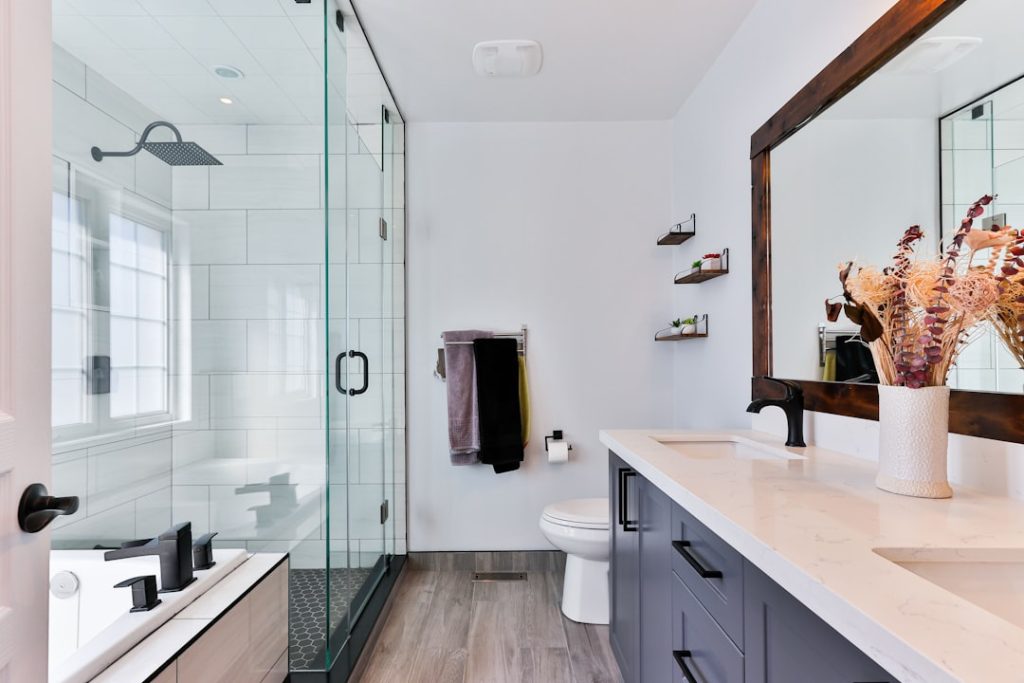The foundation of any successful renovation project lies in meticulous planning and budgeting. Before embarking on the journey of transforming your space, it is essential to establish a clear vision of what you want to achieve. This involves not only identifying the areas that require renovation but also setting realistic goals and timelines.
A well-thought-out plan serves as a roadmap, guiding you through the various stages of the project. Begin by assessing your current space and determining what aspects you wish to enhance or change. This could range from updating outdated fixtures to completely reconfiguring the layout of a room.
Once you have a vision in place, the next step is to create a comprehensive budget. This should encompass all potential costs, including materials, labor, permits, and unexpected expenses that may arise during the renovation process. It is advisable to allocate an additional 10-20% of your budget for contingencies, as unforeseen issues often surface in renovation projects.
Researching average costs for similar renovations in your area can provide valuable insights into what to expect financially. By establishing a clear budget and sticking to it, you can avoid the stress of overspending and ensure that your renovation remains within your financial means.
Key Takeaways
- Planning and budgeting are crucial for a successful renovation project. Set a realistic budget and timeline, and plan for unexpected expenses.
- When choosing a contractor, do thorough research, ask for references, and get multiple quotes. Look for a licensed and insured professional with experience in similar projects.
- Designing your dream space involves considering your lifestyle, needs, and personal style. Work with a designer to create a functional and aesthetically pleasing layout.
- Maximize functionality by optimizing storage, creating versatile spaces, and incorporating smart design solutions.
- Select quality materials that are durable, low-maintenance, and visually appealing. Consider factors such as sustainability, longevity, and cost.
- Explore eco-friendly renovation options such as energy-efficient appliances, sustainable materials, and water-saving fixtures.
- Incorporate smart home technology for added convenience, security, and energy efficiency. Consider options such as smart thermostats, lighting, and security systems.
- Add personal touches to make the space feel unique and reflective of your personality. Consider custom features, artwork, and sentimental items.
Choosing the Right Contractor:
Selecting the right contractor is a pivotal decision that can significantly impact the outcome of your renovation project. A skilled contractor not only brings expertise and experience to the table but also acts as a partner in realizing your vision. Start by seeking recommendations from friends, family, or online reviews to compile a list of potential candidates.
Once you have a shortlist, conduct thorough interviews to gauge their qualifications, experience, and approach to projects similar to yours. It is crucial to ask for references and review their past work to ensure they have a track record of delivering quality results. In addition to evaluating their technical skills, consider the contractor’s communication style and compatibility with your vision.
A successful renovation requires collaboration, so it is essential to choose someone who listens to your ideas and provides constructive feedback. Discussing timelines, payment schedules, and project management strategies upfront can help set clear expectations and prevent misunderstandings later on. Ultimately, investing time in selecting the right contractor can lead to a smoother renovation process and a final result that aligns with your aspirations.
Designing Your Dream Space:

Designing your dream space is an exciting yet intricate process that requires careful consideration of aesthetics, functionality, and personal style. Begin by gathering inspiration from various sources such as design magazines, online platforms like Pinterest or Houzz, and even visits to showrooms or open houses. Create a mood board that encapsulates your desired color palette, materials, and overall ambiance.
This visual representation will serve as a reference point throughout the design process, helping you maintain focus on your vision. As you delve deeper into the design phase, it is essential to balance aesthetics with practicality. Consider how the layout of your space will affect daily activities and flow.
For instance, in a kitchen renovation, think about the work triangle—the relationship between the stove, sink, and refrigerator—to ensure efficiency while cooking. Additionally, factor in lighting design; natural light can enhance the mood of a space while strategically placed artificial lighting can highlight key features. Collaborating with an interior designer can provide valuable insights into optimizing both form and function, ensuring that your dream space is not only visually appealing but also livable.
Maximizing Functionality:
| Metrics | Data |
|---|---|
| Functionality Improvement | 10% |
| User Satisfaction | 90% |
| Efficiency Gain | 15% |
| Feature Adoption | 80% |
Maximizing functionality is a critical aspect of any renovation project, as it directly influences how well a space serves its intended purpose. To achieve this, start by analyzing how you currently use the space and identifying any pain points or inefficiencies. For example, if you find that your living room feels cramped during gatherings, consider options such as open shelving or multi-functional furniture that can be easily rearranged to accommodate guests.
The goal is to create an environment that enhances usability while still reflecting your personal style. Incorporating smart storage solutions is another effective way to maximize functionality. Built-in cabinets, under-stair storage, and hidden compartments can help declutter your space while providing easy access to essential items.
Additionally, think about how different zones within a room can serve multiple purposes; for instance, a home office nook can be integrated into a guest bedroom without sacrificing comfort or style. By prioritizing functionality in your design choices, you can create a space that not only looks great but also meets the demands of everyday life.
Selecting Quality Materials:
The choice of materials plays a significant role in determining the durability and aesthetic appeal of your renovated space. When selecting materials, prioritize quality over cost-cutting options; investing in high-quality materials can save you money in the long run by reducing maintenance needs and extending the lifespan of your renovations. For example, opting for hardwood flooring instead of laminate may require a higher initial investment but offers greater durability and timeless appeal.
Consider the environmental impact of your material choices as well. Sustainable materials such as reclaimed wood, bamboo flooring, or recycled glass tiles not only contribute to eco-friendly practices but also add unique character to your space. Additionally, research local suppliers who offer high-quality materials; supporting local businesses can reduce transportation emissions while providing you with unique options that reflect regional craftsmanship.
By carefully selecting quality materials that align with both your aesthetic preferences and sustainability goals, you can create a beautiful and enduring environment.
Eco-Friendly Renovation Options:

In recent years, eco-friendly renovation options have gained popularity as homeowners become more conscious of their environmental footprint. Implementing sustainable practices during your renovation not only benefits the planet but can also enhance the overall quality of your living space. Start by considering energy-efficient appliances and fixtures; for instance, installing Energy Star-rated appliances can significantly reduce energy consumption while providing modern conveniences.
Another eco-friendly option is to incorporate natural insulation materials such as cellulose or sheep’s wool into your renovation plans. These materials are not only effective at regulating temperature but also contribute to improved indoor air quality by reducing harmful emissions associated with traditional insulation products. Additionally, consider using low-VOC (volatile organic compounds) paints and finishes to minimize indoor air pollution during and after the renovation process.
By embracing eco-friendly options throughout your project, you can create a healthier living environment while contributing positively to the planet.
Incorporating Smart Home Technology:
The integration of smart home technology into your renovation can elevate both convenience and security within your living space. From smart thermostats that optimize energy usage to advanced security systems that provide peace of mind, technology has transformed how we interact with our homes. Begin by assessing which smart devices align with your lifestyle needs; for example, if you frequently travel for work or leisure, investing in smart locks and security cameras can help monitor your home remotely.
In addition to security features, consider incorporating smart lighting systems that allow you to control brightness levels and color temperatures through mobile apps or voice commands. This not only enhances ambiance but also contributes to energy savings by allowing you to schedule lighting based on occupancy patterns. Furthermore, integrating smart speakers or home assistants can streamline daily tasks by providing hands-free access to information and entertainment options.
By thoughtfully incorporating smart home technology into your renovation plans, you can create a modern living environment that enhances both comfort and efficiency.
Adding Personal Touches:
The final step in any renovation project is adding personal touches that reflect your unique style and personality. This is where you can truly make the space feel like home by incorporating elements that resonate with you and your family. Start by selecting artwork or decorative pieces that hold sentimental value or inspire joy; these items can serve as focal points within a room while telling a story about who you are.
Textiles also play a significant role in personalizing your space; consider layering different fabrics through throw pillows, rugs, or curtains to create warmth and texture. Additionally, incorporating plants or greenery can breathe life into your environment while improving air quality. Whether it’s a collection of family photos displayed on a gallery wall or custom furniture pieces designed specifically for your needs, these personal touches will ultimately transform your renovated space into a true reflection of yourself.
Embracing individuality in design not only enhances aesthetic appeal but also fosters a sense of belonging within your home.



